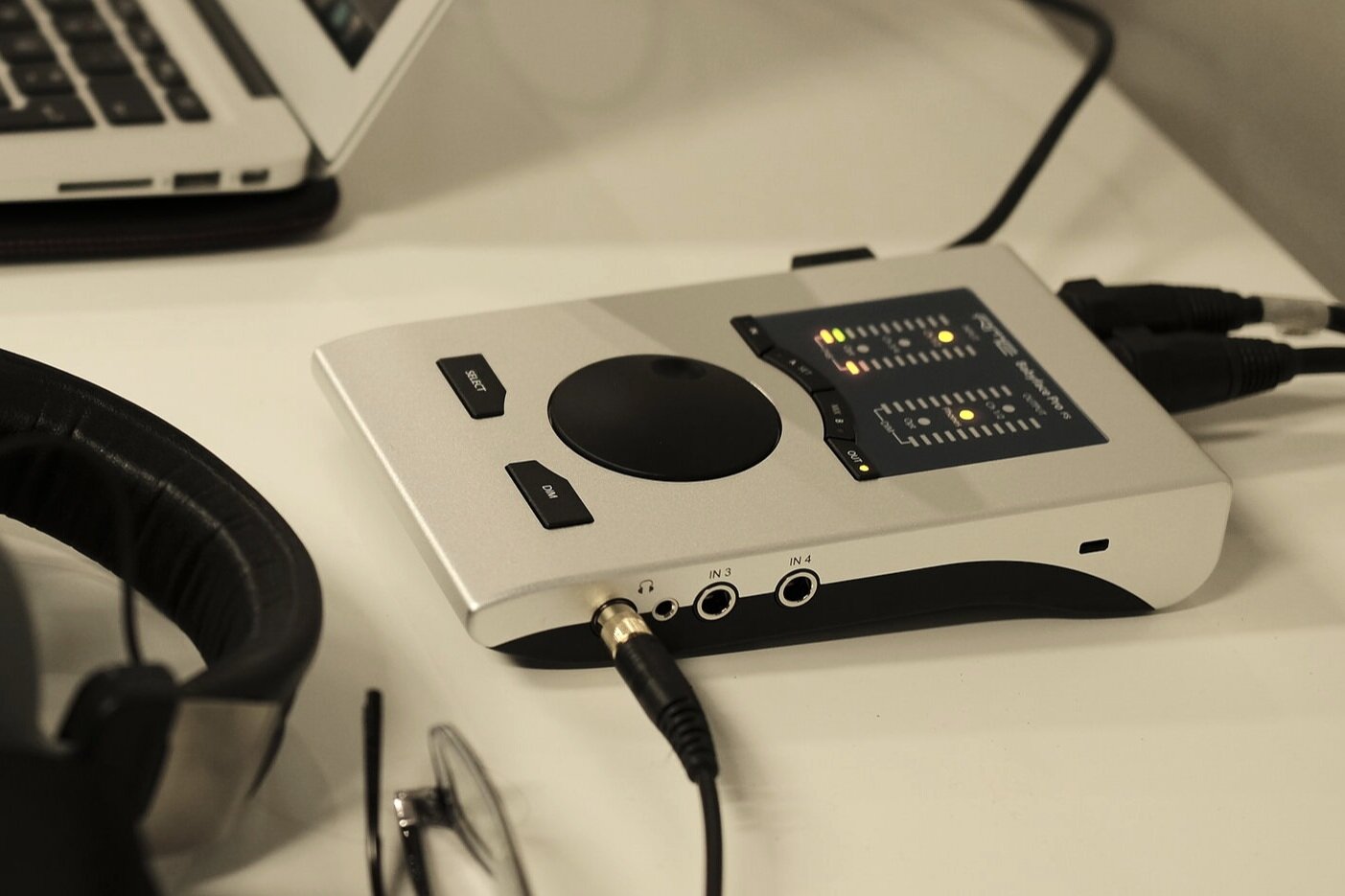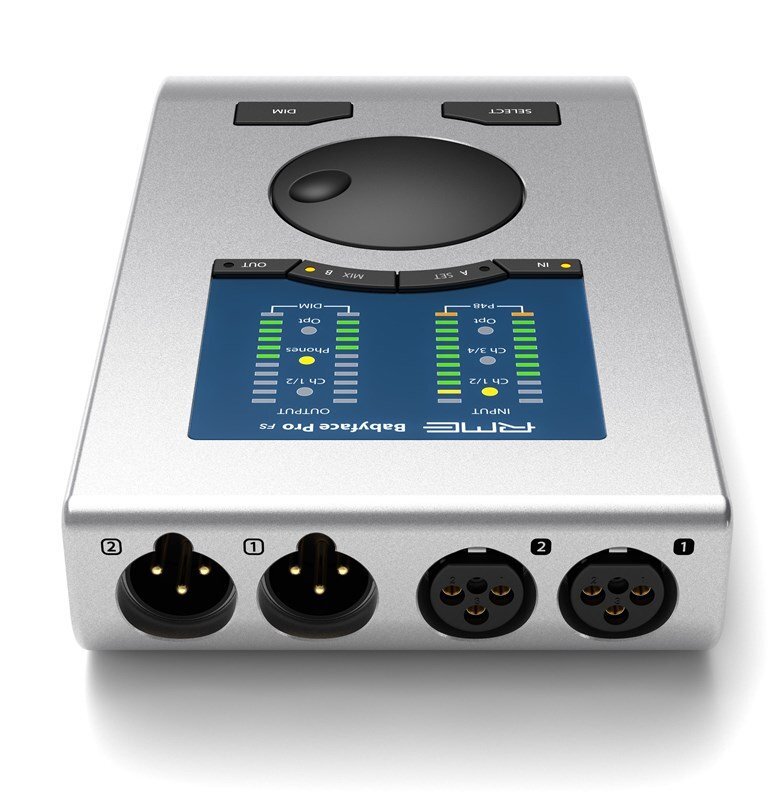RME Babyface Pro FS Review
The best portable audio interface gets a welcome refresh.
There have been ten years since the introduction of the first Babyface; a portable interface with a unique form and the renown RME build-quality and performance stability. Five years later, the Pro version arrives and brings performance updates in practically every aspect and a new luxurious aluminium chassis. The latest revision updates it clock and now includes a full SteadyClock FS circuit as in the ADI-2 Pro FS for lowest jitter, as well as an improved 3,5 TRS headphones output with 90 mW, from the 70 mW that is found on the older version, and the same output op-amp as on RME's ADI-2 Pro.
The BabyFace takes on a remote location session.
Newly designed analogue and digital circuits improve the SNR and THD figures for the microphone inputs and monitor outputs, while innovative energy-saving technologies allow the Babyface Pro FS to remain bus-powered for portable setups. A small size, high-performance drivers and a fine fidelity designate the new RME as one of the best small audio interfaces for the home studio or the producer on the go.
The Device
A slight slope, tilts the controls towards the user
The Babyface Pro FS is housed in a tough chassis cut from a single block of aluminium. It has a slight slope, that tilts the controls and the metering LEDs towards the user for greater accessibility. It looks quite elegant in real life, much better than any pictures I've seen. The craftsmanship of the unit is exemplary and all the buttons have a satisfying feel to them.
Apart from the two excellent mic-preamps on the back of the unit, there are two additional line-inputs on the right side should you wish to connect it to an external preamp. A lot of small interfaces can only handle two inputs, which are generally enough for classical guitar, but the two extra channels can be proven rather helpful the few times that I might need to record a larger ensemble or experiment with different microphone setups.
Digital I/O with up to 8 channels is also available via ADAT or SPDIF to accommodate bigger setups.
Preamp inputs, monitor outputs and comprehensive metering.
Two balanced XLR outputs feed the monitors is another welcome feature that is rarely seen on interfaces of this size. A surprising inclusion though is a pair of independent headphone busses, one with with a standard jack, the other with a mini-jack socket. Unfortunately, there is no separate control for the two phones, and according to RME, the TRS phone would be 6dB louder. Nevertheless, the next time you will forget the 6,3mm to 3,5mm adaptor on a location recording, you won't be miserable.
Considering the portable nature of the Babyface Pro Fs, I think that RME missed the mark with the provided hardshell case. Don't get me wrong, it is great to have and more than welcome, but it adds a lot of unnecessary bulk. The case itself, although not as premium as the interface, seems durable enough. Opening it up reveals a lot of unused space, with almost one-third of it to be empty. There are slots for the USB and Midi cables, which is handy, and another one for a power supply - that is not included. A case exactly the right size just for the unit would be preferable, I can always throw all the necessary cables in my backpack anyway.
The Babyface has a DC input for standalone applications, but as mentioned the power supply is not provided by RME as the interface is fully bus-powered. I haven't used one to test if there is any additional performance profit.
Unusually for any product in 2020, a two-hundred-page printed manual is included, both in German and English.
Clarity in abundance
True to the reputation of RME, the BabyFace Pro FS delivers a clear and articulate sound. The low-end is full, much better than of most competitive interfaces, while the midrange and high-end remain accurate. The ADDA conversion has only a tad less realism and depth than that of my ADI-2 Pro FS, but I was expecting that.
The preamps are also excellent, I wouldn't hesitate using them for any production. The lack of colouration might make them seem sterile for sources that might benefit from a bit of character. For classical guitar and other acoustic instruments, I find them to be precise and truthful. Might not be as refined or pleasing as expensive outboard preamps, but there is nothing to complain about for interface preamps.
Drivers and TotalMix FX
What separates RME to most other interface manufacturers is the perfect harmony of software and hardware implementation. The in-house developed drivers grant to its interfaces unparalleled stability and performance, and the Babyface Pro FS is no exception. The latency times are the lowest (the lower the better) in its class and working with the interface is seamless. Audio dropouts and other issues that occur in badly written drivers can diminish the user experience or even render a recording useless, however, the Babyface has been flawless in that regard. RME also provides extended support, with driver updates and service for many years after a typical product lifecycle; an OS update wont turn the unit into an expensive doorstop.
The BabyFace Pro FS is equipped with DSP effects for zero-latency monitoring.
Additionally, the TotalMix FX console comes packed with every sensible routing option and zero-latency DSP effects. My needs are pretty straight-forward though, and I have only used a fraction of the possibilities provided. The plethora of options can be a disadvantage, as the GUI seems complicated at first, but it is cleverly designed and with a modern look.
Conclusions
Excellent conversion, small size and the best drivers for audio known to man, place the RME on top of the list of small audio interfaces for the home-studio or location recordings. Although there are plentiful small and portable interfaces, most of them target the consumer or prosumer market. The Babyface Pro FS is one of the few devices that offer professional performance and functionality for the recordists that have fewer demands in terms of channel numbers but don't want to compromise on the audio quality.










